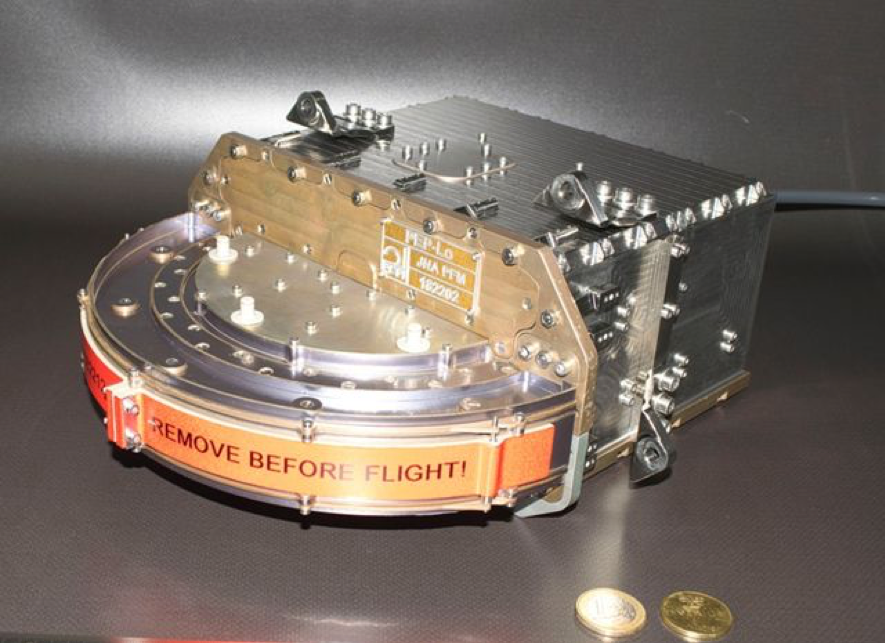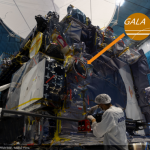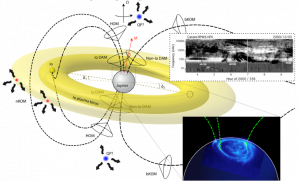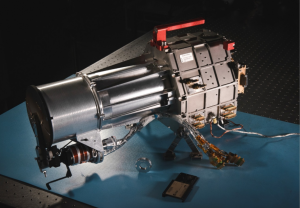
The Jovian Neutral Analyzer (PEP / JNA) : Onboard JUICE:
The JUpiter ICy moon Explorer (JUICE) is an ESA-led mission with strong involvement from Japan. The “ONBOARD JUICE” series looks at the instruments on JUICE for which Japan has contributed hardware or expertise. An introduction to the mission and instrument overview can be found [here].
Author: Asamura Kazushi, lead researcher for PEP/JNA-Japan
Quick fact sheet: PEP/JNA

The Jovian Neutral Analyzer (JNA) is one of six sensors that form part of the Particle Environment Package (PEP) onboard JUICE. The electronics boards (except for a high-voltage power supply) of PEP/JNA were developed at ISAS, and shipped to the Swedish Institute of Space Physics in February 2020 to be integrated into PEP/JNA.
PEP/JNA will directly measure back-scattered and sputtered particles coming from surface of Jovian icy moons, such as Ganymede and Europa. Back-scattered and sputtered particles are microscopic particles that are either reflected or ejected from a surface after bombardment by other energetic particles. Since the atmospheres of the icy moons are tenuous, plasma particles (ions and electrons) in the vicinity of Jupiter can reach the moon surfaces without losing their energy through collisions with atmospheric particles. As a result, the projectile energy of the in-falling particle remains high as it collides with the surface, and this induces the generation of back-scattered and sputtered particles. These processes are the only mechanism that can generate emitted particles with energies enough high for detection by PEP/JNA.


Although the energetic incoming particles are electrically charged ions, most of the resulting back-scattered particles are converted to electrically neutral particles through the reflection on the surface. The majority of the ejected sputtered particles are neutral particles as well. The trajectory of an energetic neutral particle is ballistic because it is not deflected by a magnetic or electric field. Hence the back-scattered and sputtered particles fly while retaining information about the plasma that precipitated onto the moon surface and triggered their release, such as the particle species, energy, and location of the precipitation. This tells us about the characteristics of the large-scale source plasma surrounding Jupiter that is producing the precipitation onto the moon surface. Furthermore, these neutral particles can be imaged from a remote site. Conversely, it is difficult to sense the remote plasma environment with plasma particle measurements. Such measurements can only provide us with information on the local plasma environment in the vicinity of the detector. The observation of energetic neutral atoms can therefore complement the plasma particle measurements in terms of investigating the space plasmas.
The plasma environment around Jupiter is significantly different from that of Earth’s magnetosphere. For example, a combination of Ganymede’s intrinsic magnetic moment and subsonic plasma flow blowing to Ganymede forms a mini-magnetosphere inside the Jupiter’s large magnetosphere. On the other hand, the terrestrial magnetosphere is formed by supersonic solar wind and the Earth’s magnetic field. Understanding the plasma environment around Jupiter is interesting since it contributes to the understanding of space plasma physics in universal sense.
Further information:
The JUICE Mission: Japan joins ESA to head to the icy moons
PEP/JNA Fact Sheet
JUICE Japan website
 Previous Post
Previous Post Next Post
Next Post






